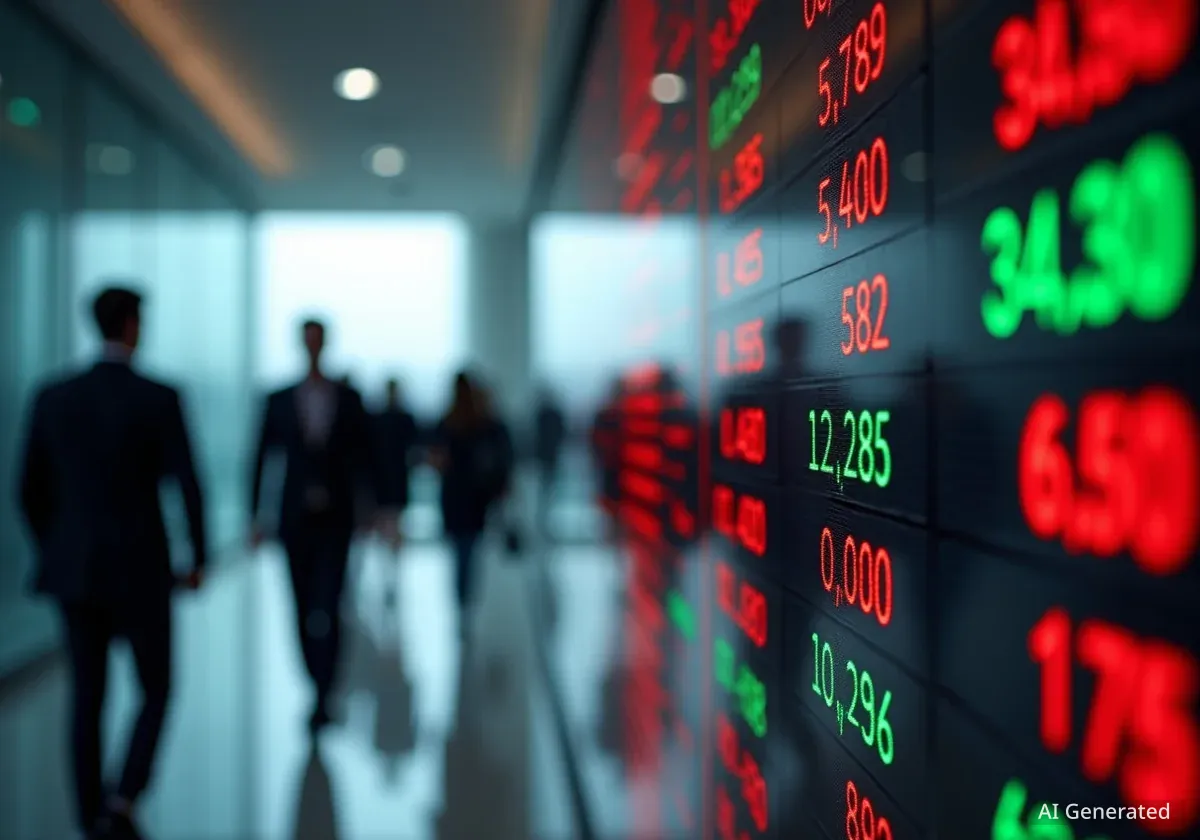Global inflation rates are showing signs of persistence, challenging central banks and impacting household budgets worldwide. Despite a series of aggressive interest rate hikes over the past two years, core inflation metrics in major economies like the United States and the Eurozone remain above target levels, signaling a prolonged economic challenge.
Recent data indicates that while headline inflation has cooled from its peak, underlying price pressures in the services sector continue to drive costs higher. This situation places monetary policymakers in a difficult position as they weigh the risk of triggering a recession against the need to restore price stability.
Key Takeaways
- Core inflation in several developed nations remains stubbornly above the typical 2% target set by central banks.
- The U.S. Federal Reserve, European Central Bank, and Bank of England are maintaining high interest rates to combat persistent price pressures.
- Energy price volatility and strong labor markets are identified as key factors contributing to ongoing inflation.
- Economists are divided on the outlook, with some forecasting a gradual decline in inflation while others warn of a potential resurgence.
A Look at the Global Inflation Data
Recent economic reports from around the world paint a complex picture of the fight against rising prices. While the rate of inflation has decreased from the multi-decade highs seen in 2022, the journey back to stable prices is proving to be uneven and challenging.
In the United States, the latest Consumer Price Index (CPI) report showed a modest increase, primarily driven by rising costs for housing and transportation. According to the Bureau of Labor Statistics, the shelter component of the index continues to be a significant contributor to overall inflation.
Across the Atlantic, the Eurozone is facing similar issues. Eurostat, the statistical office of the European Union, reported that services inflation remains elevated, even as energy prices have stabilized. This suggests that domestic demand and wage growth are now the primary drivers of price increases.
Inflation Snapshot: Year-Over-Year
- United States (CPI): 3.5%
- Eurozone (HICP): 2.4%
- United Kingdom (CPI): 3.2%
Note: Figures are based on the latest available data and are subject to revision.
The Role of Energy and Supply Chains
Global energy markets continue to be a source of uncertainty. Geopolitical tensions and decisions by major oil-producing nations have led to price volatility, directly impacting transportation and manufacturing costs. While supply chain disruptions that plagued the global economy during the pandemic have largely eased, the system remains sensitive to regional conflicts and trade policy shifts.
According to a report from the International Monetary Fund (IMF), "Lingering supply-side frictions and volatile commodity prices pose ongoing risks to the global disinflation process." This highlights the delicate balance policymakers must strike.
Central Banks Maintain a Hawkish Stance
In response to the persistent inflation, the world's major central banks are signaling that their work is not yet finished. The era of cheap money has definitively ended, and borrowing costs are expected to remain high for the foreseeable future.
"We are strongly committed to returning inflation to our 2 percent objective over time. We will need to maintain a restrictive stance for some time to restore price stability."
This statement from a U.S. Federal Reserve official underscores the prevailing sentiment among central bankers. The primary tool at their disposal is the policy interest rate, which influences borrowing costs for consumers and businesses alike.
What is Core Inflation?
Core inflation is a measure that excludes volatile categories like food and energy from the broader consumer price index. Central banks often focus on this metric because it is considered a better indicator of underlying, long-term inflation trends. When core inflation is high, it suggests that price pressures are widespread throughout the economy.
Comparing Central Bank Strategies
While the goal is the same, the approaches of different central banks vary slightly based on their respective economic conditions.
- The U.S. Federal Reserve: After a rapid series of rate hikes, the Fed has adopted a data-dependent approach, holding rates steady while monitoring incoming economic reports. The strength of the U.S. labor market gives it more leeway to keep policy tight.
- The European Central Bank (ECB): The ECB has also raised rates significantly. However, with economic growth in the Eurozone being more fragile, the bank faces a tougher balancing act between controlling inflation and avoiding a deep recession.
- The Bank of England (BoE): The UK has faced one of the most severe inflation problems among G7 nations. The BoE has maintained high interest rates and has been clear that it will not consider rate cuts until there is clear evidence that inflation is under control.
Impact on Consumers and Businesses
The prolonged period of high inflation and elevated interest rates has tangible consequences for everyday life. Households are grappling with a higher cost of living, as wages in many cases have not kept pace with rising prices for goods and services.
Mortgage rates, car loans, and credit card interest have all increased sharply. This has cooled the housing market in many countries and has made major purchases more expensive for consumers. Savers, on the other hand, are benefiting from higher returns on savings accounts and other low-risk investments for the first time in over a decade.
Businesses are also feeling the pressure. Higher borrowing costs make it more expensive to invest in new equipment or expand operations. Companies are also navigating increased input costs and are making difficult decisions about whether to absorb these costs or pass them on to customers, which can further fuel inflation.
The Economic Outlook for the Coming Year
Economists remain divided on what the next 12 to 18 months will bring. The path forward depends on a number of factors, including geopolitical stability, commodity price movements, and the resilience of the labor market.
One school of thought suggests that the effects of the interest rate hikes are still working their way through the economy and that inflation will continue its gradual decline toward the 2% target. This scenario, often referred to as a "soft landing," would see price stability restored without causing a significant economic downturn.
However, other analysts are more cautious. They warn that a resurgence in energy prices or unexpectedly strong wage growth could lead to a second wave of inflation. In this scenario, central banks might be forced to raise rates even further, increasing the risk of a recession. The coming months will be critical in determining which path the global economy will take.





